
Correct labeling of Amazon barcodes is what ensures incredible speed and reliability in shipping packages, so their UPC & EAN requirements are sky-high.
If you have no idea what UPC and EAN are, or how it impacts Amazon sellers, don’t worry! We’re going to explain the basics of Amazon barcodes in this helpful post. By the end of this content, you’ll understand why you need barcodes for every product you sell in-person or online.
The Basics of Barcodes
There’s a lot to product labeling, but it isn’t rocket science. Essentially, here’s how it works.
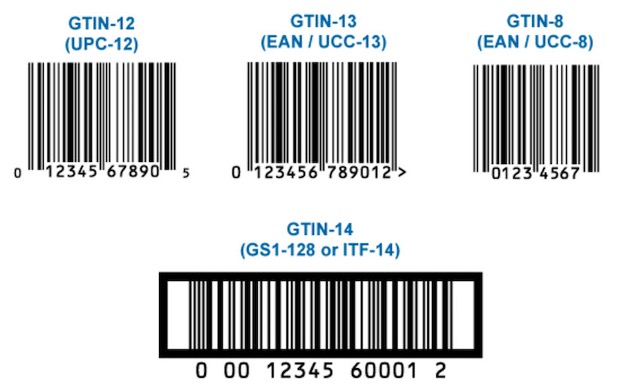
First, every product your company sells needs a Global Trade Item Number (GTIN).
If you look closely at a barcode, you’ll notice a series of numbers. These numbers, which you can refer to as a GTIN, identify the specific products you sell.
Retailers, manufacturers, and middlemen use GTIN numbers to manage inventory quickly. Each number connects a product, such as a yellow medium boy’s t-shirt, to a particular business. No other item will have the same GTIN number as this specific t-shirt.
Why Does Amazon Care So Much About Barcodes?
Without a barcode, workers and robots at Amazon sorting facilities would have a tough time locating items and shipping them out quickly. Product identifying tools increase the speed of handling millions of items each day.
After all, could you imagine sorting through 100,000 yellow shirts to find the specific one you’re searching for? That would be madness!
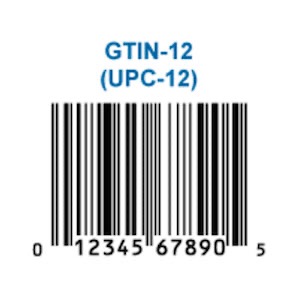
Anyhow, when it comes to GTIN numbers, there are three types. A Universal Product Code, or UPC for short, is the first kind of GTIN number. It’s a code for products you sell in the United States or Canada.
Nerdy side note, UPCs are also referred to as GTIN-12s because each trade item identification barcode includes a 12-digit code. Simple, right?
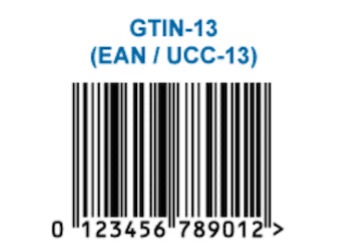
Second, you have an EAN number, which stands for European Article Number. Other than the US and Canada, most countries use EAN numbers, which also go by the name GTIN-13.
Third, Japan has another form of EAN number, called the JAN, which includes 13 digits.
Fourth, there’s an ISBN for those who sell books. ISBN stands for International Standard Book Number. ISBNs have anywhere from ten to thirteen digits. If you produce your own books, this is the number you’ll need to sell them on Amazon.
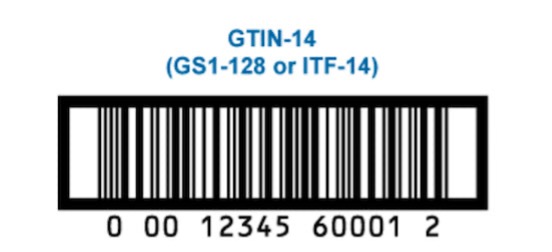
Finally, you use ITF-14s, also known as GTIN-14s, for multipacks. Multipacks are product bundles of individually packaged items. Think snack size candies that you purchase to pass out at Halloween in large bags and similarly packaged products.
What Types Of Barcodes Does Amazon Use Apart From These?
Amazon requires sellers to use two types of barcodes, depending on the product they’re selling. First are manufacturer barcodes. The second is Amazon barcodes.
Manufacturer barcodes include all GTIN barcodes. Thus, if your product has a UPC, EAN, JAN, ITF, or ISBN, then you can sell it on Amazon (assuming it’s not in a restricted category!)
Do I Need A Manufacturer’s Barcode?
Let’s face it; barcode management isn’t the most exciting topic out there. So, you’re probably wondering whether you even need manufacturer barcodes for your products.
Not all sellers have products that need a manufacturer barcode. For instance, if you private label products in your own brand, then each product you sell will need a manufacturer GTIN barcode.
But if you do not manufacture your own products and instead resell another company’s products, that product likely already has a GTIN barcode. When you enter the GTIN on Amazon as you create products, Seller Central checks whether the product already exists on the platform.
There are also ways to claim an exemption on a GTIN for your products. If you receive the exemption, then Amazon will not require UPCs, EANs, or other forms of GTINs for your products. However, that doesn’t mean you can avoid barcodes altogether.
Introducing Amazon Barcodes
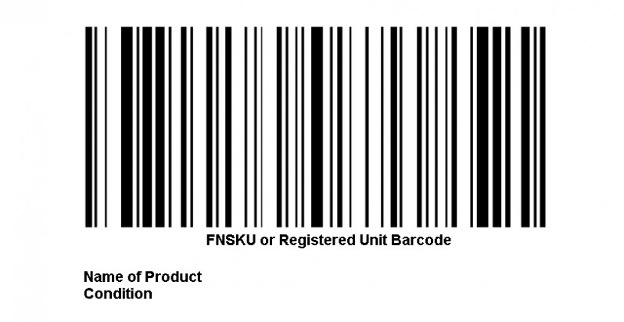
The second type of barcode is known as an Amazon Barcode. There are two that Amazon uses for labeling products, which include FNSKUs and GCIDs.
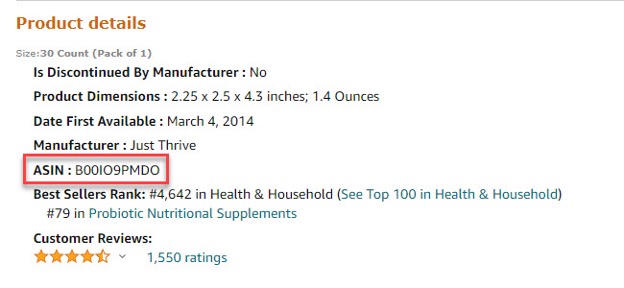
Note: There are also ASINs, which stand for Amazon Standard Identification Numbers. ASINs are an internal code for products sold on Amazon’s marketplace. These usually aren’t labeled on your product packaging and technically aren’t barcodes, but it’s still important to know.
You’ll need either the GTIN (manufacturer’s barcode) or an ASIN for any products you want to sell.
However, the process of receiving an ASIN is a lot less complex, especially if you already have a manufacturer’s barcode. More about this later.
FNSKUs are specifically for products sold using the Amazon FBA or Amazon FBM programs. GCIDs are for sellers that register their brand on Amazon. Both Amazon barcodes help sellers track and manage inventory.
If you do not need a manufacturing barcode, Amazon requires you to have FNSKUs or GCIDs for your products. Sellers that send their products to fulfillment centers pay an unplanned prep service fee if their barcode is not printed on their packaging. Keep the money by understanding prep requirements.

What Is Barcode Management?
There are several things that Amazon brands should know about barcode management. By understanding the rules of barcode management, you can save yourself time, money, and hassle as an Amazon seller.
In the upcoming sections of this guide, we’ll go over everything you must know about adding barcodes to your products. It’s vital to know label specifications, barcode rules, and common problems to avoid labeling your products.
How To Manage Product Barcodes for Use on Amazon
On Amazon, each product you list on the marketplace has its own ASIN or Amazon Standard Identification Number. This code is assigned based on a UPC or EAN barcode.
When shoppers browse products online, how can they be sure they’re looking at the correct product? The answer, because of the ASIN. If a buyer knows an ASIN or scans an ASIN barcode, they’ll find your product in Amazon’s catalog.
Amazon requires ASINs, and they help buyers locate the correct products. For example, here’s a photo of baby teething tubes.
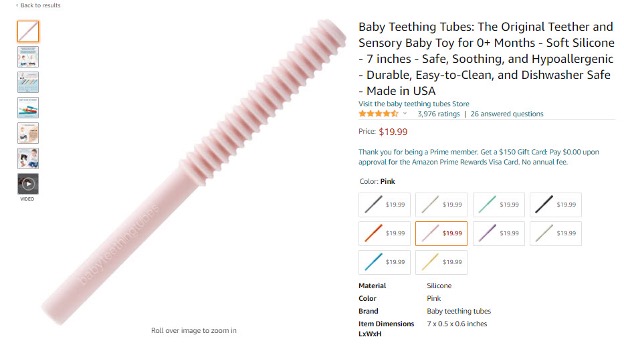
As you can see, there are several to choose from.
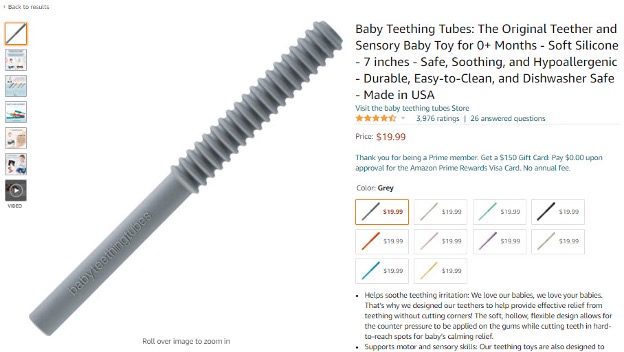
Although these are comparable products, products with different color variations are not considered the same product. A product color change, other item bundles, and even unique packaging often require the seller to generate a new barcode and, thus, a new ASIN.
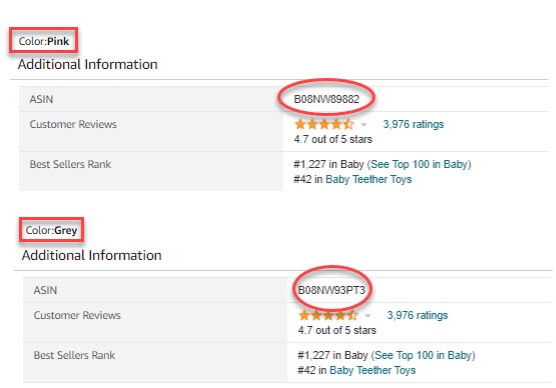
If a shopper on Amazon knows a product ASIN because they’ve purchased the item before or because someone sent them a link, they can verify that the thing they’ve found in search matches the item they want.
All that shopper needs to do is find the ASIN within the product details section and match it to the ten letters and numbers identifier.
The ASIN also helps Amazon track inventory, improve catalog listings, and index product searches on their platform.
For this reason, when a manufacturer or product seller lists an item on Amazon, they must use the correct ASIN. Either the ASIN (and therefore the product) connects to an existing product on Amazon, or there’s a new ASIN generated for new products.
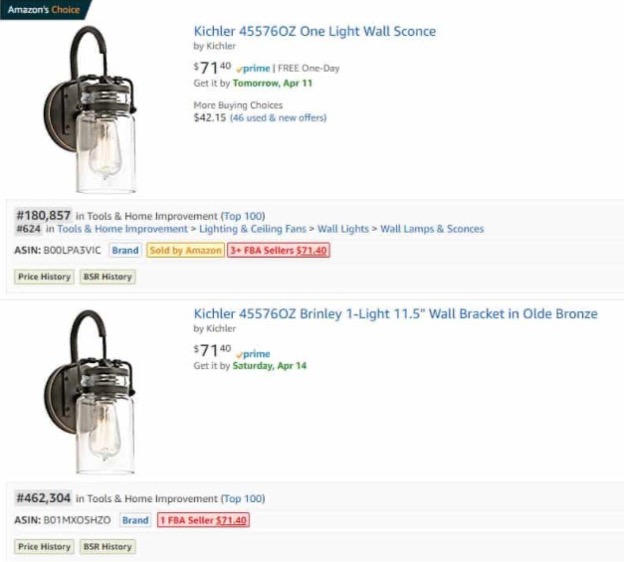
Failure to match an ASIN with an existing product creates a “duplicate listing” on the platform, which is prohibited. Essentially, Amazon doesn’t want more than one product page for the same product.
By creating a duplicate listing, your seller account can be temporarily or permanently suspended. Thus, it’s essential to manage your barcodes and ASIN numbers to avoid these problems.
How can sellers ensure that they are following the proper process for barcodes?
There’s a lot that you must know about barcodes, and ASIN numbers are an Amazon seller. However, brands on Amazon often sell hundreds, if not thousands, of products. With that number of items to manage, how can brands make barcode management easier?
There are, of course, paid tools that help you search for ASIN products. These tools usually have a monthly subscription fee. If a brand lists hundreds of products each month, these tools will speed up the process.

But what if you don’t want to pay for barcode management tools? In this case, it’s better to manually input your products while keeping track of all your barcodes and ASINs. Although this is time-consuming, it will help you stay compliant as an Amazon seller.
Let’s discuss how to receive an ASIN, which usually begins with a UPC or EAN manufacturer’s barcode.
Additionally, we’ll cover what a brand can do if they do not have a manufactures barcode but need to generate an ASIN for their products.
As a seller, you create an ASIN for new products or match an existing product on the platform with the correct ASIN. If the product is new, you’ll build a product page, which other sellers can use to offer the same product.
However, creating an ASIN for a new product requires a GTIN number. You can either get it from the product manufacturer or apply it yourself if your company is the manufacturer. That’s where UPC, EAN, and ISBN codes come in.
How The Universal Product Code (UPC) Works
The de-facto way for distributors to manage inventory is to use a UPC, or Universal Product Code, which is recognized internationally as a standard to make everyone’s lives easier.
Sellers apply for a GTIN, such as a UPC, on their product in several ways. The recommended way to apply for a barcode number is through GS1, an organization that provides and monitors GTINs.

GS1 has a US site specifically for registering UPC numbers. Going through this site provides a unique GTIN for your products.
However, you also can purchase a resold UPC number, which might be more affordable. Unfortunately, Amazon prefers you to go through GS1 to ensure that your UPC number is compliant with their policies.

Buying resold GTIN numbers is at your own risk and can potentially risk your whole seller account!
If you can afford to purchase UPC numbers through GS1, that’s usually the way to go. It’ll protect your Amazon account and your products while reducing the chance of receiving a GTIN number that’s already associated with another brand’s products.
How Does A Seller Apply For A UPC On Their Product?
With that in mind, here’s how you receive UPCs.
First, either purchase new GS1 UPCs from GS1.org. This is the best way to stay compliant with Amazon’s terms of service.
The second option is to purchase a resold UPC from a site like eBay or other barcode sales platforms.
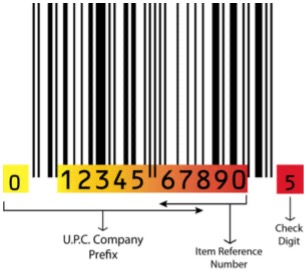
Usually, sticking with GS1 is best. Not only does it ensure that your GTINs are valid, but they also assign you a company prefix. Essentially, each barcode will include six digits assigned to your company. This product number is generally between five and two digits and consists of a “check” digit, which confirms that your GTIN is authentic.
Now, you might be wondering how exactly these codes work for resold GTIN codes. If you’re curious about this too, good job following along!
When you buy from a UPC reseller, you’re using their company prefix. GS1 won’t be aware of your products or your brand if you go this route. If their license expires, your products will not be TOS compliant.
Additionally, someone else might also use that same UPC code on their products, which will require Amazon to check the GS1 database. The incorrectly labeled product will be delisted, and seller who is using the incorrect GTIN for their product risks losing their selling account.
Okay, so enough about who to purchase UPCs from. One common question that most sellers have is whether they need a UPC at all. After all, this is a costly expense for product sellers.
There are circumstances where Amazon sellers can receive an ASIN for their product without first having a manufacturer’s barcode.
Do Amazon Sellers Need UPCs To Get Their ASINs?
Not every seller needs a UPC or another GTIN manufacturer’s code for their items. If you resell products from another manufacturer, that item likely already has both an ASIN from Amazon.
However, what if you’re selling your own unique products? Well, depending on the category of your product, you might not need a UPC to receive an ASIN.
If your products are handmade or private-label, Amazon might not require a manufacturer’s barcode on your product. There are also several categories, such as automotive parts, which do not require a GTIN.
If these situations match how you sell products on Amazon, then your products might be exempt. You can apply for a GTIN exemption.
The GTIN Exemption Process
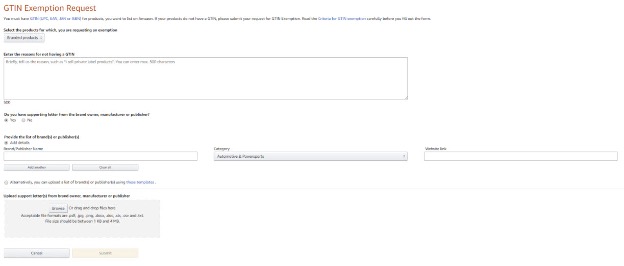
Applying for a GTIN exemption on Amazon is straightforward, especially if you are the brand owner. As the brand owner, all you’ll need to request an exemption is a product name and two (or more) images of your product and packaging.
However, the process of receiving a GTIN or UPC exemption is a little more complex if you are not the brand owner. In this case, you’ll need:
- A letter of support from the brand owner. It should explain why you do not have a GTIN from the manufacturer, owner, or publisher
- The name and contact information of the person who wrote the letter
- Your contact information
Once you have this information, you can request a GTIN exemption. Amazon reviews the request in 48 hours, and once approved, you can add your products to the marketplace.
Now that you know specific product categories do not need GTINs, you may wonder whether you should request your products’ exemptions.
Unless the item specifically cannot have a GTIN, you might be better off receiving a UPC or another GTIN for your products. Here’s why.
Amazon sellers can leverage their UPCs, EANs, and other GTIN codes to their advantage. UPCs are beneficial outside of Amazon and can help owners, fulfillment teams, and inventory managers.
Without generating codes for each product, it’s difficult to manage how your items are represented on online marketplaces. Tracking a unique identifier through your distribution systems will help people manage products and ensure that your customers receive the correct items after placing an order.
Why You Should Care About European Article Numbers (EANs)
Due to strict regulations in the European Union, most Amazon sellers wanting to sell in that area will also need to take care of European Article Numbers, or EANs.
We’ve discussed a lot of information about UPCs, but now it’s time to transition to identification codes that people outside of the United States and Canada can use.
What Exactly Is An EAN?
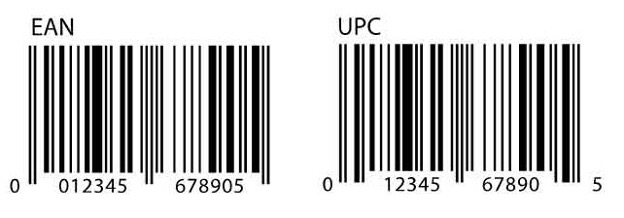
The European Article Number is the GTIN format that people outside the US and Canada use to barcode products. If you sell outside of those two countries, then register your products using EANs. It is crucial to register your products as a European seller.
However, unless you sell outside of the US or Canada, you don’t need an EAN for your product. And if you ever expand overseas, retailers can add a zero to the beginning of each product’s UPC so that the product code includes 13 digits.
Because it’s better to have one identification number per product, you should not register EANs and UPCs for the same product. Duplicate registration will prevent your organization from having inventory management problems, and most retailers should be able to work with both GTINs.
As you add products to your Amazon account, you can select the appropriate identifier from a drop-down menu. Thus, if you have EANs for your products, you do not also need UPCs and vice versa.
Not having multiple barcodes makes it convenient for product manufacturers to expand to other territories without changing their management systems.

Less popular but still relevant to sellers wanting to ship to Japan, JANs (or Japanese Article Numbers) are the equivalent of EANs but specifically made for the Japanese peninsula.
If you sell on Amazon.jp, you can still use your other inventory identifier codes. JANs also include 13 digits, so you can input JANs as EANs whenever you add new products to Amazon.co.uk or Amazon.com.
Phew, now that you understand a ton about GTINs, let’s discuss the three-step process for correctly labeling products on Amazon. That way, you can start listing your products on Amazon quickly while ensuring that you’re TOS compliant.
The 3-Step Process To Get Any Product Correctly Labeled on Amazon
For each new product release or even product updates, you also have to issue unique barcodes and, therefore, new ASINs. Each new product means starting from scratch with optimization, reviews, and more.
Here are the three steps you can take to ensure that all your products are correctly labeled on Amazon.
Step #1 of Barcode Management: Buy Amazon Barcodes
Unless you’re selling in an exempt category, you’ll need a GTIN. Go with either the GS1 UPC or EAN inventory codes based on where you operate and sell your products.
You have two options for purchasing GTINs from GS1. First, you can buy a single UPC barcode for around $30, which is the best option if you’re selling a limited number of products.
Another alternative is to request a company prefix. This option is more expensive, but it will become more affordable as you register new products throughout the years.
Buying GTINs from GS1 is simple. Fill out an application and use the barcode estimator to determine how many barcodes you need.
There are different pricing tiers you can select from. The more barcodes you purchase, the lower the price per GTIN. However, there’s also an annual renewal fee if you’re buying between ten and 100,000+ barcodes.
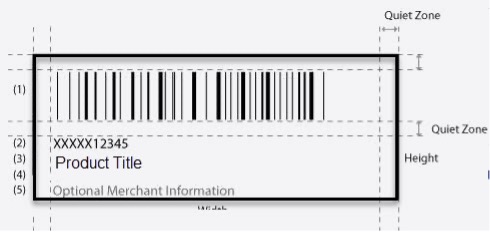
Once you have an exemption or the GTIN barcode number, generate your FNSKU if Amazon helps fulfill your orders. If not, you can skip this step.
Step #2 of Barcode Management: Assign Each Product with a GTIN
After purchasing barcodes, it’s time to assign each one to a product in your catalog. Keep track of this using an Excel spreadsheet or online asset management system.
Now that this step is complete take a breather; you’re almost there!
By assigning each product a GTIN, you can now label all your products. You’ll want a barcode on your products or the packaging. Printing your labels is affordable while ordering pre-printed labels saves you time.
What about rules for placing barcode labels on packages? Yes, Amazon barcode requirements exist and set standards for sellers.
There are several things to know about barcode placement, primarily if your company uses the FBA program. You need to place your barcode labels:
- Away from edges, corners, and curves
- With at least ¼ inch of space from the label to the package edge
- In a way that obstructs other visible barcodes (or just cover those)
- On the outermost layer of the package
Simple enough? You got this! Let’s move onto the next step.
Step #3 of Barcode Management: Manage the Labeling Process
At this point, you’ve been doing everything manually. You’re purchasing GTINs, printing labels, and ensuring that your customers receive their items correctly. Now it’s time to free your time by outsourcing this to another party.
Let’s face it; there’s a lot to product packaging that we don’t have time for in this blog post. Poly bagging, bubble wrapping, and taping packages are an art of their own.
And there are even other labels, such as instructional and warning labels, that some Amazon sellers must post on packages.
As a seller on Amazon, it’s your job to stay compliant with all the policies that the leading online marketplace requires. Outsourcing less important tasks like adding barcodes to product packaging are best left with someone else.
Should Your Manufacturer Label Your Items?
If you’re already working with a manufacturer, why not have them print barcodes or place labels on your products? It’s a simple way to save time. Say goodbye to printing and labeling items yourself.
Should Amazon Label Your Items?
Another option is to have Amazon label your products. Having Amazon label your products is a time-saving trick for FBA sellers. You provide shipment information to the fulfillment center, and Amazon labels your products for a $0.30 per-item fee.
Expert tip: You can also have Amazon prepare your packages for you. Combined with the labeling service, you’re looking at around $1 to $2 per item. Your company can decide whether it’s worth the time savings.
Why is it Important to Label Your Products?
As a product seller, it’s crucial to complete transactions quickly and accurately. By managing the labeling process, you guarantee that all your products are ready for delivery.
Your customers will appreciate the time your company spends on the packaging. You’ll enjoy how easy it is to manage inventory. Both are positives for your business.
Don’t Let Barcode Management Distract You From Your Brand
The number of tasks in an Amazon business is often mind-numbingly high, and barcode management is one of those: “I wish I didn’t have to do it” type of task.
Let’s face it; barcode management isn’t simple for beginners or experts alike. It requires a dedicated team to manage thousands of products in a catalog.
But what if there was a way to save time, energy, and money managing barcodes as an Amazon seller? How much could you achieve in your business by focusing only on the essential tasks?
As an Amazon marketing Agency that hundreds of Amazon account owners trust to perform Amazon management and marketing services, we understand your need for a good partner.
If you ever need assistance in any aspect of your business, from labeling products to improve your product listings, trust Emplicit to get it done.

